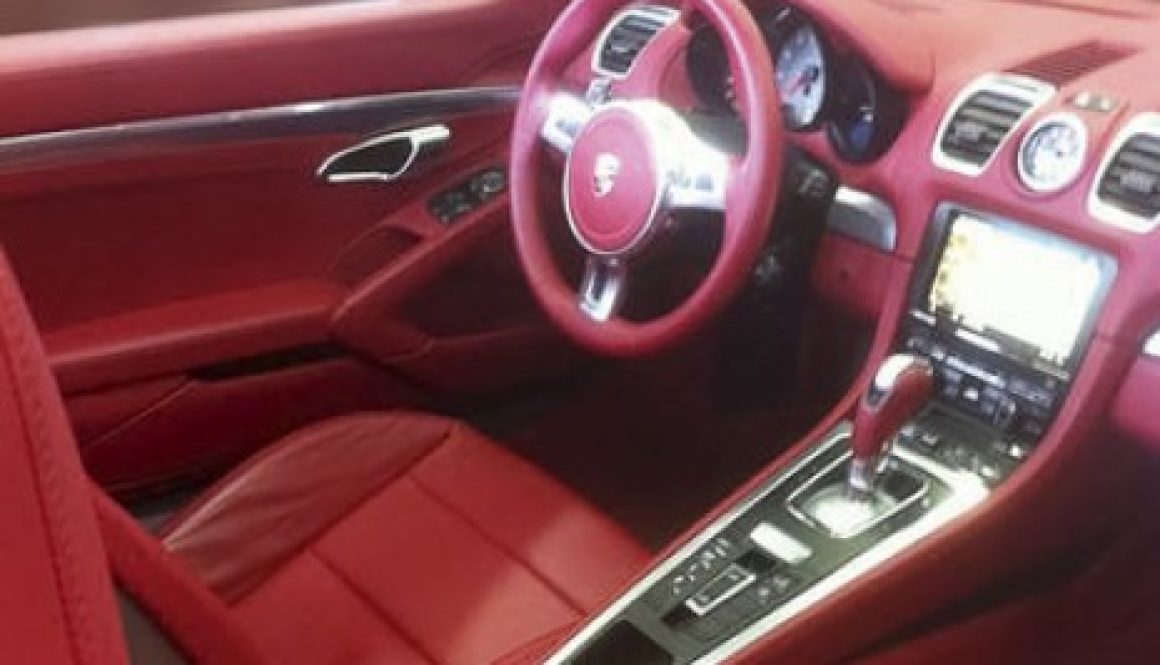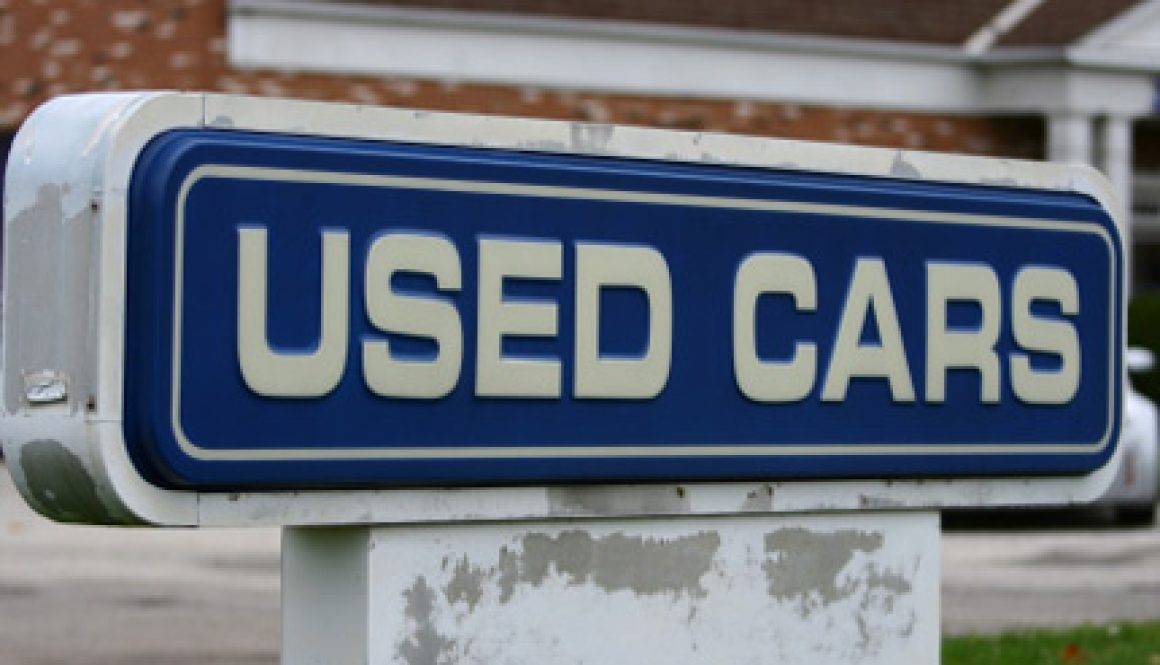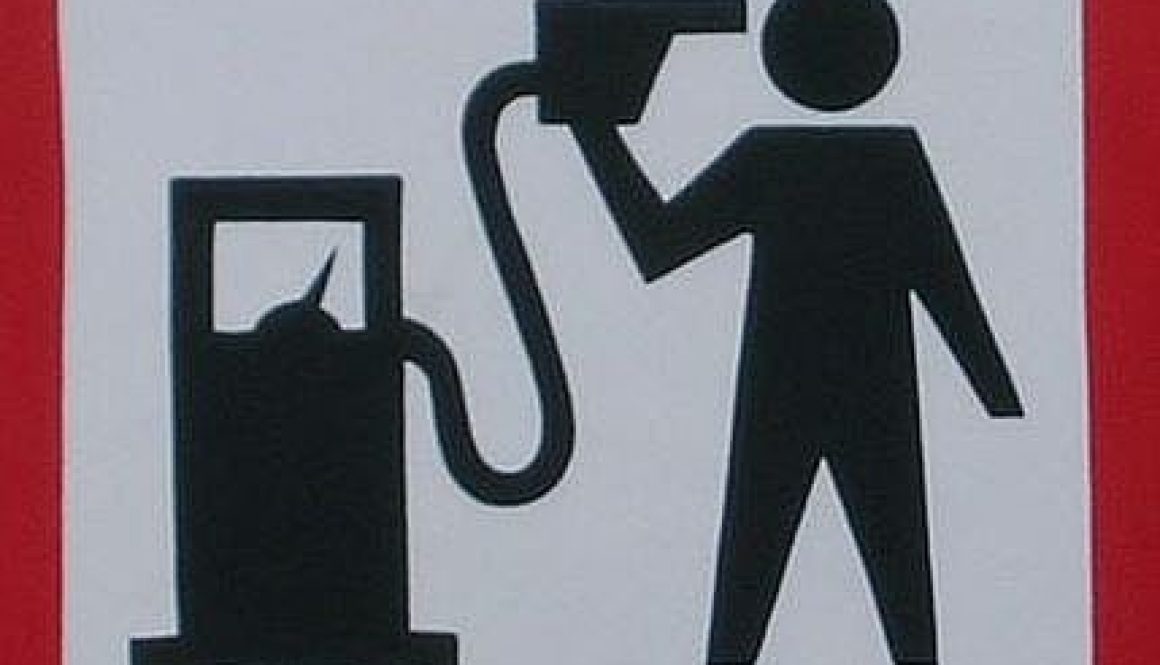
December 2011


New Porsche Boxster interior
It’s almost hard to believe that the Porsche 911 is once again set for a facelift, but as it turns out, it is, with an unveiling pinned for the Geneva Motor Show in March. However, up until this point very little has been known about the car and just how drastic its facelift will be.
Nevertheless, that hasn’t stopped the press having a firm say in how the car should be despite no word coming from Porsche. One thing can be confirmed, however, and that is what the car’s interior will look like, thanks to this leaked photograph originally published by AutoExpress.
It’s clearly evident from this grainy photograph that the Boxster’s new interior will be heavily based on those found in the Panamera and 2012 911, with an extended transmission tunnel being the centre of attention. The photo also shows that the Navigation System will include a larger display, with various switches then being found behind the gear-lever to operate everything from traction control to suspension settings.
Other than those things, the photograph doesn’t reveal much more, but almost every major component has been reported on so here’s a quick refresher. First off, the Boxster will be larger than the outgoing model to make room for the baby Boxster expected to be released in the coming years.
What’s more, it’s been suggested that the new Boxster will either feature a revised version of the 310-horsepower 3.4-liter six-cylinder engine found in the current car, or smaller four-cylinder engine tuned to produce comparable power and torque figures.
The engine, which ever option Porsche goes for, will then be mated to either a six-speed manual transmission or Porsche’s seven-speed dual-clutch PDK transmission, which could either feature thumb-controlled shifters or traditional behind-the-steering-wheel paddles, as both have been used on Porsche’s in the past.
As mentioned, all should be revealed at the Geneva Motor Show in just a few months’ time.

Buying Used Car
Used Cars. A simple term that has a less than positive meaning for most car buyers. Conventional wisdom says that buying a used car is buying someone else’s problems. However, as new car quality has gone up, the risk of buying a late model used car has gone down. In fact, the automotive industry doesn’t even call them used cars anymore. The term to look for now is Certified Pre-Owned, or CPO.
“There is a growing market in this country for used vehicles that have been put through a Certified Pre-Owned program. CPO vehicles give the consumer a chance to buy the latest models, often only two or three years old, at a big savings over a new car. So, when you buy one, you’re really doing yourself a favor,” says John Davis, host of MotorWeek, the longest running weekly automotive show on television.
More than a third of all late model used cars and trucks sold last year — nearly 1.2 million vehicles — came with a Certified Pre-Owned designation. They are typically vehicles that have low mileage, and have been put through a battery of tests to make sure they are in tip-top condition. Vehicles that fall into this category are mostly just off-lease, secured from factory executive car auctions, from rental fleets, or the very best trade-ins.
“A new car depreciates by 15 to 20 percent the moment you drive it off the lot,” says Davis. “If you buy one that’s Certified Pre-Owned, you avoid taking the initial depreciation, yet have an almost new car with a strong warranty and in some cases a better warranty than a new one. Smart consumers can think of these vehicles as the best and brightest in their class.”
According to CNW Marketing Research, Inc., one can expect to pay a premium of between four and seven percent for a vehicle with the Certified Pre-Owned designation. “They may cost a little more than you’d expect to pay for a used car, but when you look at all the checks and balances performed and the extra warranty, it’s easily worth it,” says Davis.
Among the benefits, not just some, but all vehicle parts that are even moderately worn have been replaced. Many Certified Pre-Owned cars come with new brake pads, hoses, accessory belts, wipers and batteries. Their engines and transmissions have been checked and overhauled if necessary; minor exterior damage — like nicks, dings and tattered trim — is repaired or replaced; carpets and seat upholstery are shampooed or cleaned, and if they look less than new, are replaced.
Beyond that, certified programs provide additional warranties, often up to 100,000 miles, and may also include perks like car-club style roadside assistance. This kind of warranty actually exceeds the coverage offered by the factory when it was new. “Certification programs increase consumer confidence about the quality of a used vehicle,” says Scott Weitzman, senior director of retail programs for the noted automotive polster, J.D. Power and Associates.
But, don’t just buy any vehicle that is labeled Certified Pre-Owned. The best CPO programs are found only at new car dealers, with repair requirements and warranties backed by the factory. Also, ask to see the checklist on the car or truck of your choice so you will know exactly what has been serviced.
“Simply put, purchasing a Certified Pre-Owned vehicle is really a win-win situation for everyone. Manufacturers make money on vehicles they had in fleets or on lease, dealers increase their income percentage compared to new car sales, and customers walk away feeling better about some of the built-in guarantees,” says Davis.

Saving Fuel
The best time to think about fuel efficiency is before you buy a car. Generaly, smaller cars will use less gas. And since insurance and taxes are also more of a bother in large cars, it may be wise to buy a little car if you care about the money. Also, among the larger cars, some are better than others. All you have to do is relate to the miles per galon figure that comes with it. Sports cars, by the way, are the best way to make more fuel burn away, and automatic transmission is also a good way of wasting a lot of it.
But those seem too obvious. The interesting thing is how to make a given car which you already have in your garage, go further on every single litre. As a rule, you can improve fuel efficiency by as much as 25% simply by changing your driving style, provided that your car has a manual gearbox.
Here’s what you do: Try to change the gears (up) without the engine going to high RPM – certainly not over 2.5k RPM (2500 rounds per minute). I know a lot of people extend first,second and sometimes even third gear more than that because they want to accumulate speed. This may get you to the next traffic light before the car on the other lane, but there’s a price to be paid – paid with a currency called petrol.
As long as you change the gears early you’re pretty much maximizing the fuel efficiency of your motorcar. One last tip: Stay away from traffic and don’t crawl (using the cluctch) too much. In other words, driving in the city is wasteful where fuel is concerned.

Chip Tuning
While adding custom accessories and engine upgrades can have a dramatic affect on vehicle performance, chip tuning offers an even more comprehensive way to ramp up performance. What is chip tuning, you ask? Simply put, it is modifying a car computer to utilize fuel in a different manner, change the way it manages the engine and several other aspects. There are two types of chip tuning in use, one for older cars and one for newer vehicles.
OBD I Cars – OBD I cars are older vehicles that use a less sophisticated car computer. Chip tuning with this type of vehicle involves little more than removing the ECU and installing a performance chip. Perhaps the best examples of this type of car are 80’s model Honda Civics, CRX’s and VW Golf’s. Of course, there are many other vehicles, but these are two of the most popular types of cars in which to change the chip.
OBD II Cars – Newer vehicles have a much more sophisticated car computer. This controls how fuel is used, when the ignition fires and much more. These computers are part of the newer “drive by wire” systems, rather than operating the vehicle via mechanical linkages only.
In order to tune the chips on these vehicles, you will need to upgrade the ECU software. This is accomplished by flashing the computer with software updates and new fuel maps. The new maps tell the computer to use fuel in a certain manner, rather than using it at the OEM settings. In order to flash the ECU, you’ll need to find a performance shop that offers these services. You will also need to find your own fuel maps, as most shops do not provide them. You can locate new maps online, through a variety of different companies.
Tuning your car’s computer can be done alone, but has much better benefits when you combine it with other aspects of customization. Adding body kits and lightening your vehicle’s weight will help maximize your car’s use of fuel, adding power and performance without increasing fuel usage considerably.
With the right tips and information (not to mention the right shop), you can successfully tune your engine to any desired performance output. Tuning your car’s computer can even be used to gain better fuel economy, though this option will usually result in lowered performance, rather than heightened power.

Volkswagen Polo GTI – 2011
The actual Volkswagen Polo GTI is actually back again. A strong 132 kW or one hundred and eighty PS return! This particular GTI life as much as it’s renowned title: Exceptional dealing with qualities single along with uncompromising motor character as well as no more than security. The actual listing of high-tech functions operates with the brand new VW Polo GTI just like a typical style. Consider the actual motor: This particular Polo is actually driven with a brand new 1. 4-litre TSI along with gas immediate shot in addition turbo- as well as supercharging. Book downsizing. Energy is actually used in the leading tires using a 7-speed DSG, that is regular gear. A digital transverse differential locking mechanism (XDS) decreases the actual inclination in order to understeer as well as particularly enhances dealing with within fast generating via figure.
